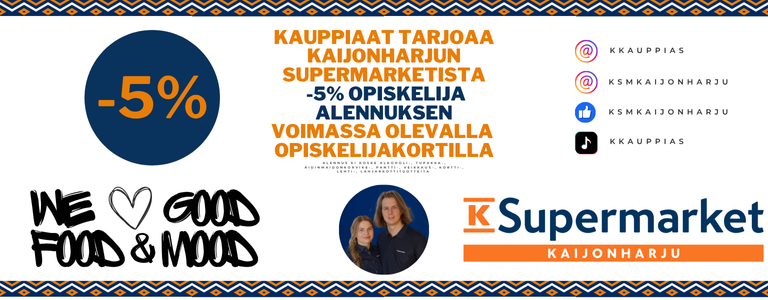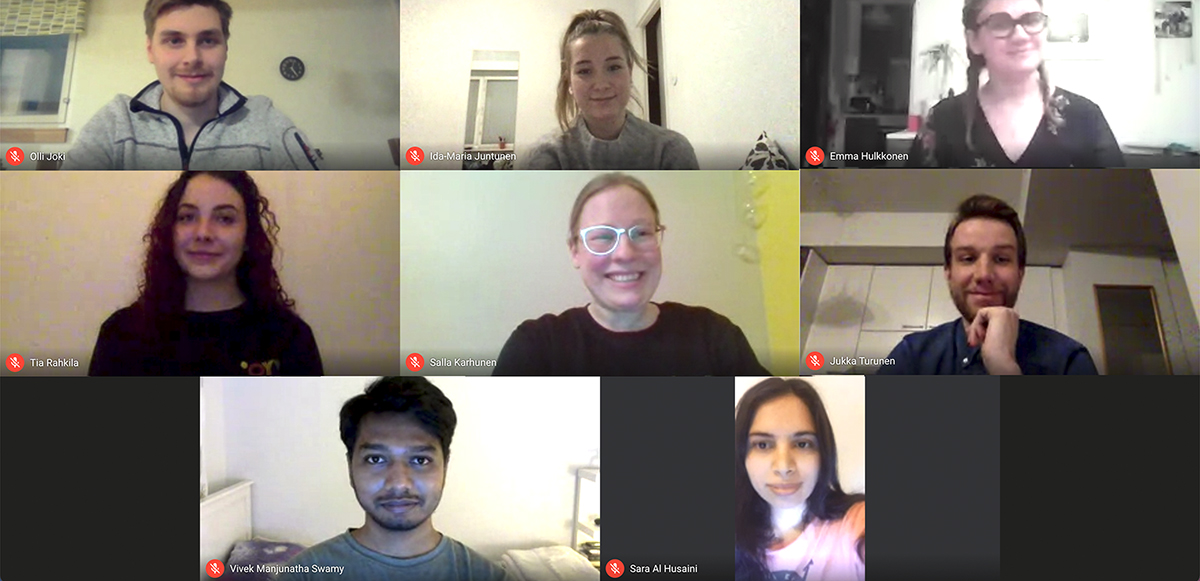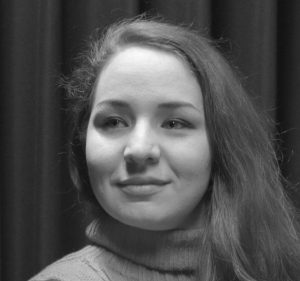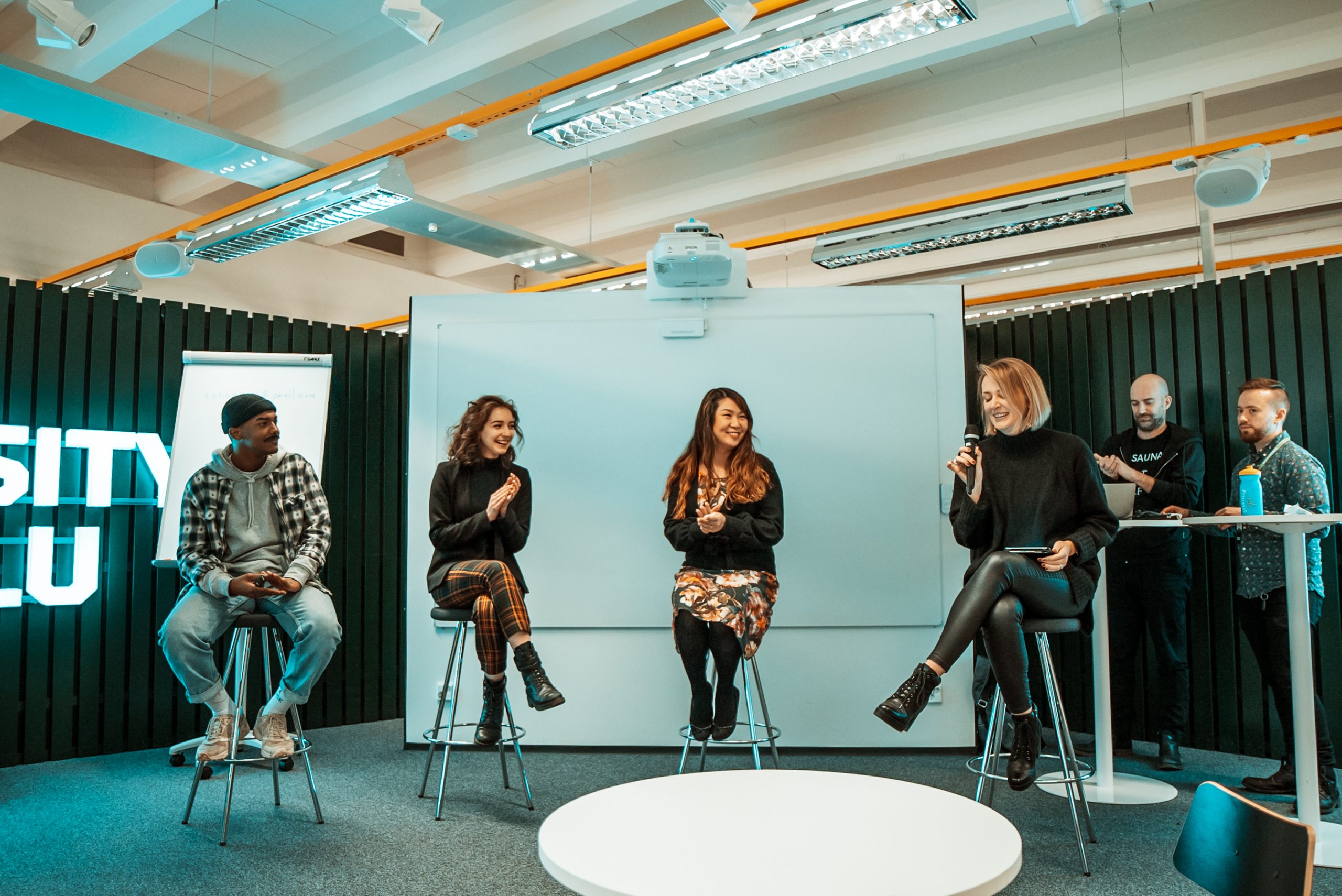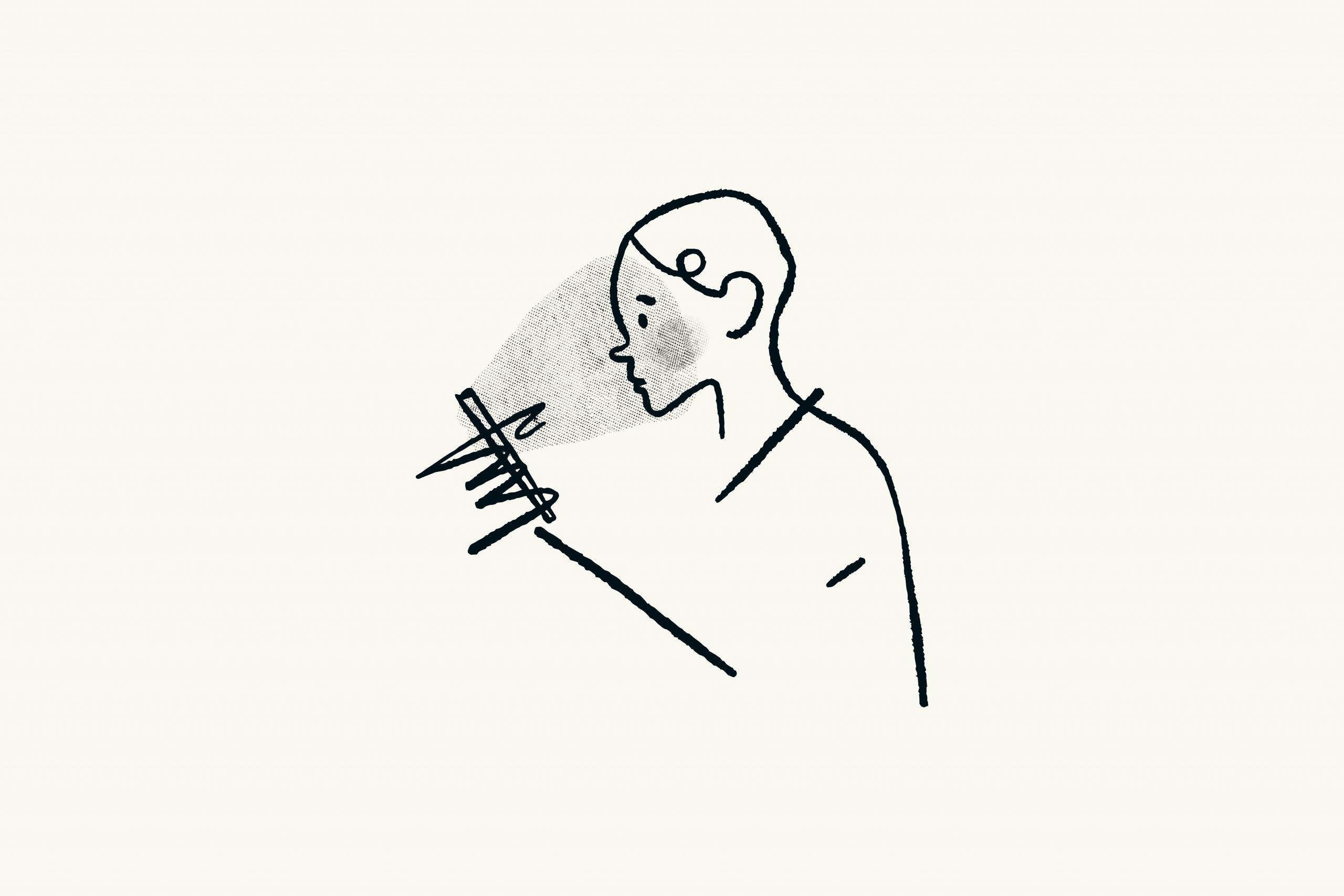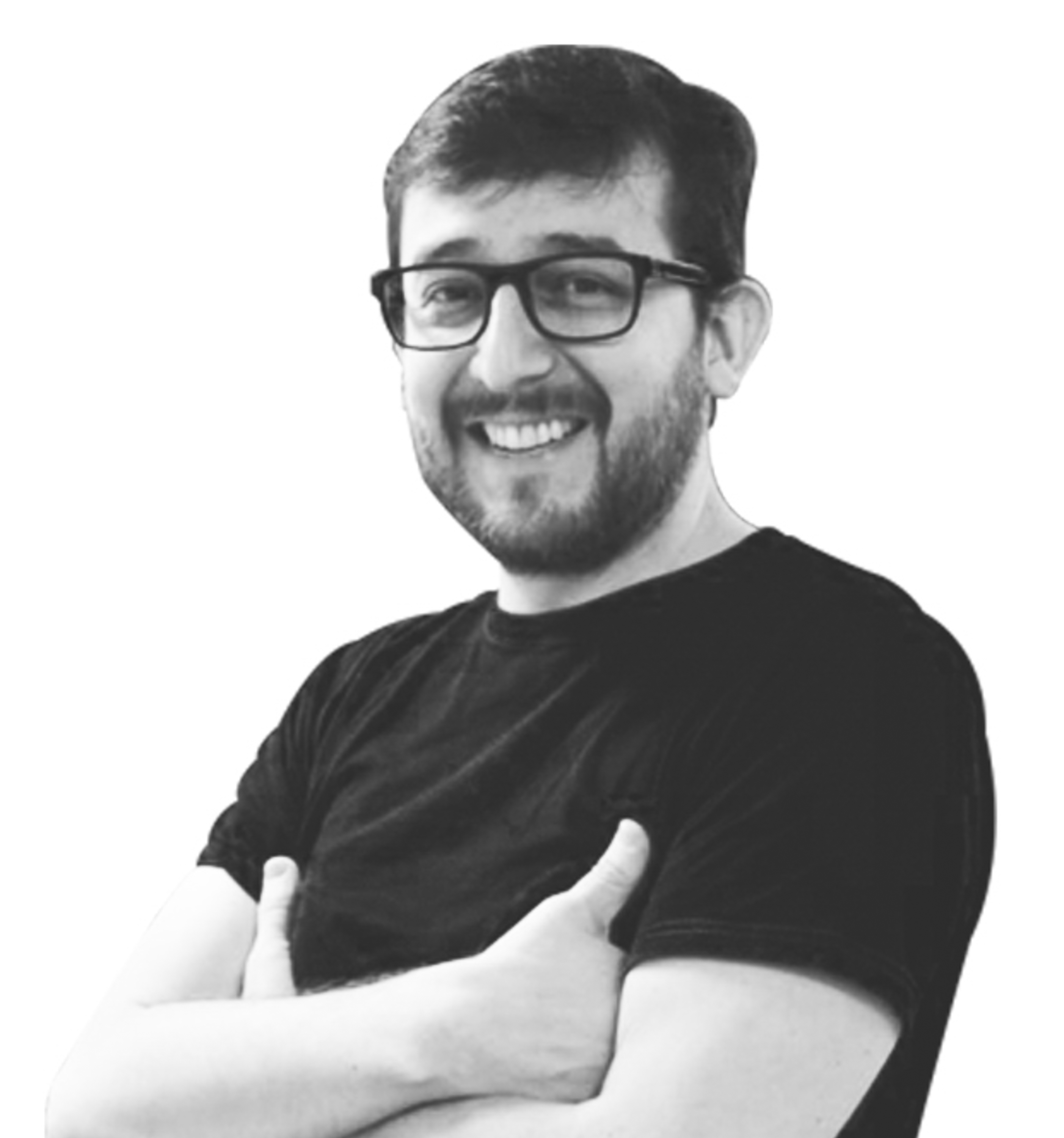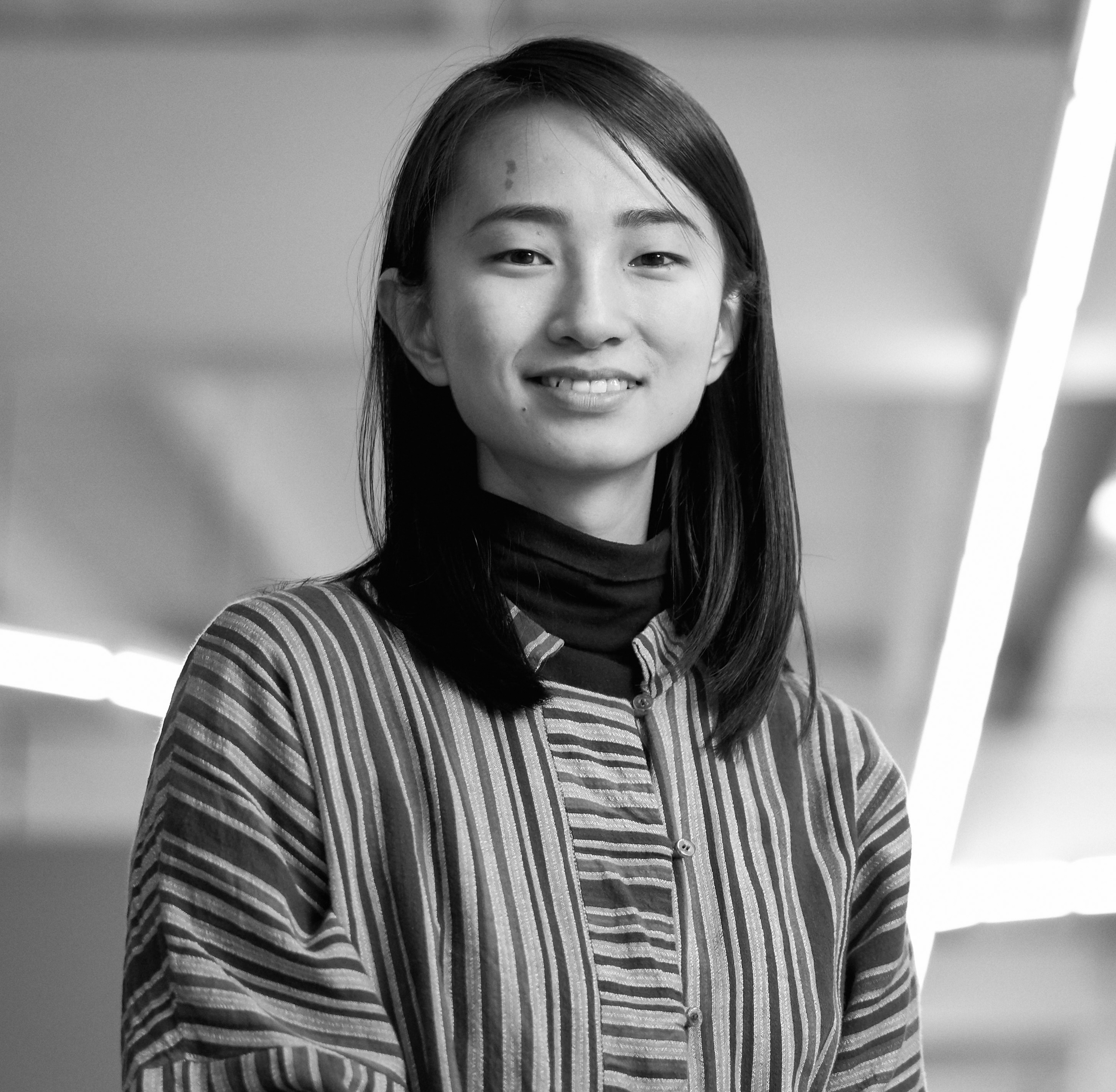Lue tarina suomeksi.
Students, exchange students and corona freshmen have felt the situation of the world: you can’t come to campus or meet friends and teaching is reliant on online platforms. As the situation stays the same, there is a real danger of separating from the community – that is, the student union OYY as well.
This year there were more applicants to the board than in previous years and based on the board’s answers, part of that is the pandemic. On the student union’s board this year are both an international student and a freshman from the pandemic year who both want to experience the university community as their own.
For the first time in a while there will be familiar faces on the board as well as Tia Rahkila continues from the last year. Also last year’s student council’s vice chair Salla Karhunen has found her way onto the board.
The student union of the university of Oulu for the year 2021 decided their responsibilities in their meeting on the 14th of January. We interviewed the new board on why they applied and how it feels to be there.
The chair of the board and all members answered the same questions. Read their answers below.
Why did you apply to be on the board?
What kind of history do you have as a student influencer?
What kind of image do you have of OYY before your year in the board?
What do you hope to achieve on the board in 2021?
Are you excited about a specific thing in this upcoming year? Does something make you nervous?
How are you going to fit the board into your life, are you going to keep studying? How will you take care of your wellbeing?
What kind of student union do you want to leave behind?
What would you want to say to your fellow students?
Olli Joki, 23, fourth year business student
Chair of the Board, responsible for ownership, external stakeholder activities and finances
“I have been working with OYY in the student council since my freshman year. This year I felt like I still have more to give to OYY. At this stage of my studies I also have time to be on the Board.
I started in the Student Council in 2017 and worked as TeTa’s group leader. On top of that I’ve been a halloped in the business school and actively participated in Finanssi ry’s activities as well as with The Finnish Business School Graduates.
My view of the Student Union has been quite different from an average student since I’ve been involved from the start of my studies. I recognize that the student union doesn’t reach our students well enough. That’s also a reason why I’ve sought out working on the board: for OYY to be more accessible and available and people would relate to the student union more. That’s what we’ll be working towards together.
My view has also been critical through working in the council. I’ve been examining different functions critically, even those rooted in the law like mandatory membership.
Our goal as an organization is to move forward and get closer to students and student organizations. The goal is to succeed in projects and lobbying. I also hope that we can fail and learn from that and keep going regardless.
Personally as the chair I want to help my board members grow as experts and lobbyists and also grow myself.
I’m especially excited about working with everyone. We have a good group of people with different backgrounds and areas of expertise. I’m a little frightened about how long the corona situation will last and when we can meet in person with the board.
As the chair of the board I’m committed to working full time so I won’t be studying much on the side. The current situation with remote teaching makes it so that some courses are easy to complete, so I might take a course during spring. I do however think it’s important to find time for myself to relax and recover.
I want to leave behind a student union that’s more open, more communal, braver and more influential. First and foremost a kind of student union that everyone would like to belong to.
I’d like to cheer everyone on in these difficult times. We will make it through together! On top of that I want to encourage everyone to take part in OYY for example in the student council election in autumn. Remember to also use your vote during the municipal elections so we can get students voices heard on that level too.”’
Salla Karhunen, 25, third year early childhood education student
first vice chair, responsible for projects, events and finances
“I’m interested in the student union’s work. I have a desire to develop and to learn more. In the student union I get valuable experience for the future.
Since I was a freshman I’ve been in Lastarit ry and am still there. In my second year I jumped into the student council and also was the vice chair there last year.
After getting into the student council the activities have been clear. It’s hard to say, because I’ve known about the student union through people close to me.
It would be quite an achievement if we together could influence people so that we get lots of candidates for the student council elections and get the voting percentage up as well as get people to apply for positions in OYY.
We have a good group of people. I look forward to getting to know everyone and working together.
I’ve aimed to leave weekends and vacations for relaxing. I have studies as well, I’m writing my bachelor’s thesis and also have an internship coming up. My attitude is that there’s no panic, everything will come in its own time. If I don’t have time for my thesis, then I’ll do it after summer.
Open and visible in a positive light.
Live fully – everything will work out.”
Ida-Maria Juntunen, 21, first year business student
Member of the board, responsible for elections and campus development
“I wanted to get involved in my first year to have as much time as possible to affect things for a longer period of time. I’ve always been interested in organization work so it felt natural to jump right in.
In upper secondary school I was on the student board of Oulun lyseo. I’m also on the board of the Youth of the National Coalition Party in Oulu.
There isn’t much I can say as a freshman. I know that some friends applied to be on the student council last time around and I followed that on the side. My own experience of OYY is mostly paying the membership fee.
In my own sector my goal is to better students’ lives through the municipal elections. I hope that we can get OYY’s goals heard there. Personally my goal is to learn as much as possible now that everything is still new.
I’m excited and a little nervous about there being so many new things to take in. It’s a little scary. I’m excitedly waiting for contact learning in the autumn, since I haven’t had a chance to experience that yet.
My studies are going on normally. My aim is to schedule studies and OYY things so that they will go side-by-side. I hope to keep work on the weekdays and leave weekends with as much free time as possible. My way to relax is to have a half hour break even on weekdays to have lunch with a friend or something. That already does wonders for my day, not to have “work mode” on all the time.
I would hope that it would be more easily approachable for all students and that from the start it would feel like OYY is a community for all of us. As a new student I’ve seen that not much is known about OYY except for the membership fee and that the activities feel distant. I’d hope that this was a shared thing for all of us.
I want to say take care of yourselves and each other.”’
Jukka Turunen, 25, fourth year teacher student
member of the board, responsible for student organizations
“I’ve been in different organizations for a few years. Each year the university and OYY have gotten more familiar and close to me. This year was the best time to apply to be in on the action.
I started as a tutor and in OLO ry in my second year, which I’m still a part of. I’m also a vice member of the university collegium and a local member of SOOL, the Teacher Student Union of Finland.
A certain feeling of distance, especially when I wasn’t involved in student organizations. Now I feel like OYY became a lot closer to our entire organization during the pandemic by helping and informing us. Maybe a student has to approach OYY too much and not the other way around.
I want to go out of my comfort zone and work on a good life for even more students. Regarding my sector I also aim to secure communality offered by student organizations even during the pandemic.
I look forward to the entire year, whether it’s studies or the student union.
I have thought about it, being involved in organizations and other things. I can make it with good scheduling and openness to everyone. I’ve learned that sometimes you have to honestly take time off to keep being efficient instead of just using up time. My studies are also progressing normally but I’ll avoid studying during the weekends.
More approachable, accessible and visible.
You can survive anything when you do it together.”
Emma Hulkkonen, 24, third year logopedics student
Second vice chair of the board, responsible for academic affairs, continuous activities and finances
“I have two reasons: a desire to develop myself and an interest in affecting the environment I’m in. OYY is a logical environment to affect things in my everyday life while I study.
In my freshman year I was in my own subject’s student organization Communica ry as well as the umbrella guild. I’m also in the student council as a deputy and group leader as well as a halloped. I also acted as the advocacy section’s chair last year.
It’s hard to think about how OYY seemed to me earlier since I’ve been involved for so long. I do know that to many students it seems distant. I remember in my freshman year I got OYY and the University’s people mixed up.
For me the most important thing is that the advocacy sector would be accessible. I’d like for people to know who to ask for help in each matter and be brave enough to seek out that help. The second thing related to that sector is that we would get more applicants for hallopeds and students would know who hallopeds are.
Overall I’m super excited for the upcoming year. This year there’s a lot to look forward to and lots of nice things going on. I’m waiting anxiously to get to know the new people who I get to spend the rest of the year with better.
Right now I’m most nervous about having so many things to take in. I do know that it’s a good learning experience and I’ll make it through, even though there are things I don’t know yet.
I’m studying. I’ve tried to limit my scheduled program to studies and the board and I’ve taken everything else out of the equation. A calendar is my best friend and I get by listening to my body that tells me when I need to rest. The best way to relax for me is sports.
An active student union that is a visible part of students’ lives. One that has sustainable action in every area.
I’d like to tell students that they can come talk to us if they have thoughts or concerns. We will gladly talk and babble with students.”
Vivek Manjunatha Swamy, 27, Environmental engineering master’s student
Member of the board, responsible for international affairs
“In my first year I thought I’m just getting to know the University and the people around here. The second year was the perfect time to get involved and learn more about academic affairs.
During my bachelor’s I was the branch representative for mechanical engineering so I have some experience being the go-to communication guy between the students and the University. When it comes to Oulu, this is my first experience.
As an international student the Student Union is “pay the fee and forget about it”. That’s what I did in the beginning. I think the corona situation brought everything into perspective. We looked towards OYY for help and followed what the Student Union was doing for us. Since last year my view has changed, I feel more involved in this Student Union. There’s a feeling that it’s about us international students as well, we are a part of OYY.
International affairs is a topic that has three parts. It not only involves international students here, there’s also Finnish students trying to go on an exchange as well as the quality of studies for international students. When it comes to Finnish outgoing students, they are overlooked in a sense and we could do more for them. International students also don’t know their rights and opportunities here and I’d like to take a more informative approach when it comes to that.
The exciting part is working with my colleagues here, there’s a lot we can accomplish working together. Everyone here is more experienced than me knows a lot about the workings of OYY. I am interested in learning with them. The scary part is bringing back contact learning especially how it will affect international students. I hope that I can handle that well when the time comes.
Since I’m in my second year, most of my studies are completed. The only thing remaining is my thesis and a few courses so I have time for all this OYY stuff.
I think it’s important to set a good example and good groundwork for the future boards as well. When it comes to them looking back on what we did, it has to be an example of how things should progress.
I would like to do my job to the best of my abilities and bring some change.”
Tia Rahkila, 24, fourth year business student
Member of the board, responsible for communications
“I wanted to bring continuity to OYY and get to develop things further, since the work isn’t done in a year. I feel like I still have more to learn and I have more to give to OYY.
I was on the board of OYY last year. This year I’m also working for Nordic Economics Students’ Union NESU Finland and as a halloped. In the last years I was also involved in Finanssi ry.
I’ve been involved in OYY for a few years now, but luckily I also remember how it felt in my first years of university. OYY was really distant and far from many students, me included in my freshman year and second year. OYY doesn’t have visibility to all students and students don’t know what we do.
I want to undo the overly complicated organization that affects the distance. I think last year we did a good job in bringing the student union closer to students.
Regarding my own sector, I want to keep up the good work from last year and put effort into outgoing communication. I also want to bring continuity to last year’s good practices transferring over to this year. Personally I want to develop my weaker points.
I look forward to seeing everyone physically together. I also look forward to getting to learn new things and do communications. I hope I’ll also complete my bachelor’s studies and that remote studies won’t go on for too long.
My studies will continue on the side and I’m also involved in other organizations. Luckily everything fits together pretty well: I can use what I learn in everything I do. I take care of myself by scheduling things. I learned last year that working 24/7 or even 18 hours a day isn’t ok. I relax by going on a run and by talking to my friends about everything.
It’s a difficult question, because I’d like for it to be everything positive. More communal for all members but also encouraging development and critical thinking.
For me openness and being close to others has helped. Keep the closeness even now. I’d like to stress openness to the university as well, it goes both ways, as well as positive communication.
Sara Al Husaini, 28, fourth year English student
Member of the board, responsible for social affairs and tutor trainings
“I had a desire to affect my own school and learning environment and develop it for all of us. OYY is a great place to get to know new people and learn.
In upper secondary school I was the chair of the student union and I’ve also acted as an Erasmus+ ambassador.
OYY is quite distant. In the beginning I didn’t really get what it’s purpose is, I just paid the membership fee. Communication has helped, for example messages through Tuudo have been visible.
I want to create a better environment and bring the student union closer. Even to us who are actively taking part, OYY has been pretty invisible in the beginning. I want to think about how to make it more visible and get students involved more actively.
I’m excited about having new tasks and on the other hand nervous about how it will go. I also wonder how we’ll be able to hold events and see students physically. I’m nervous about how I’ll hold up if spring continues like this, but hopefully we’ll get to work physically together in autumn
I will continue to study and will also do an internship. Olli and I have agreed how we’ll conduct things if I can’t make the meetings. We’re pretty flexible and a good team.
I want to leave behind a more equal and more just student union that’s also more visible.
I know things are hard now, but we can make it and get over this.”

